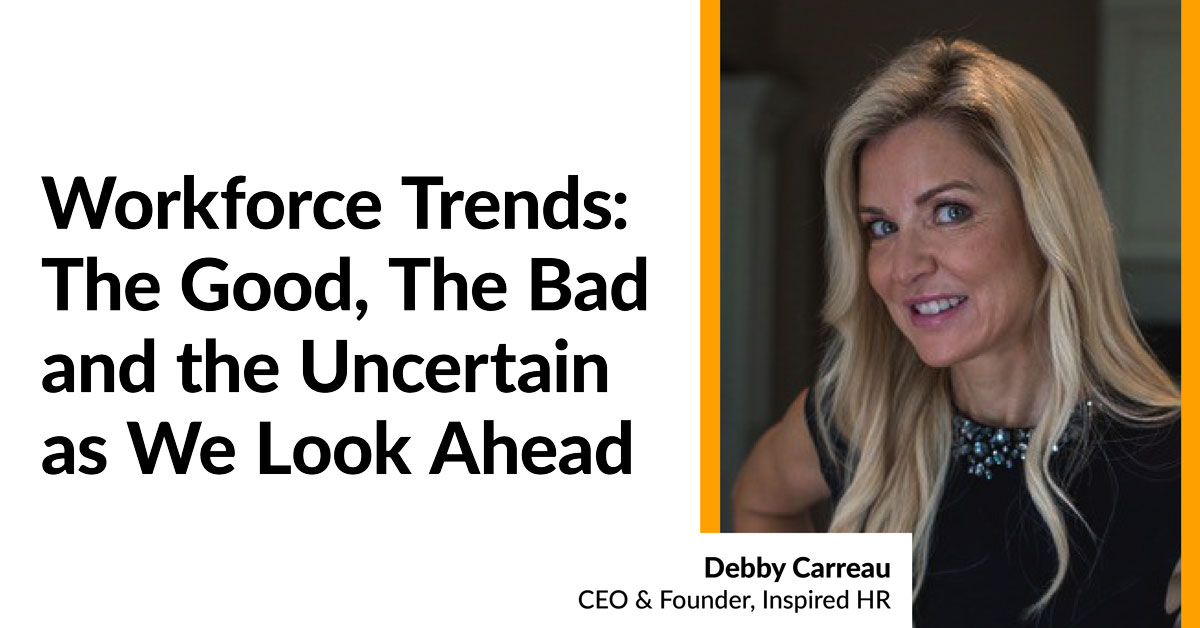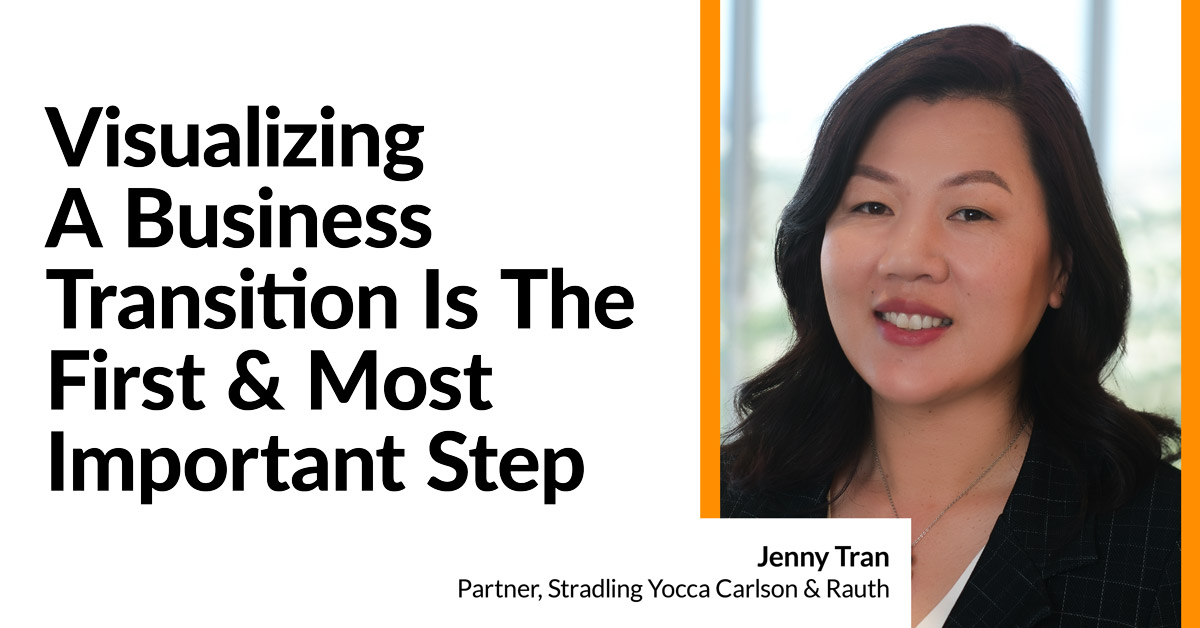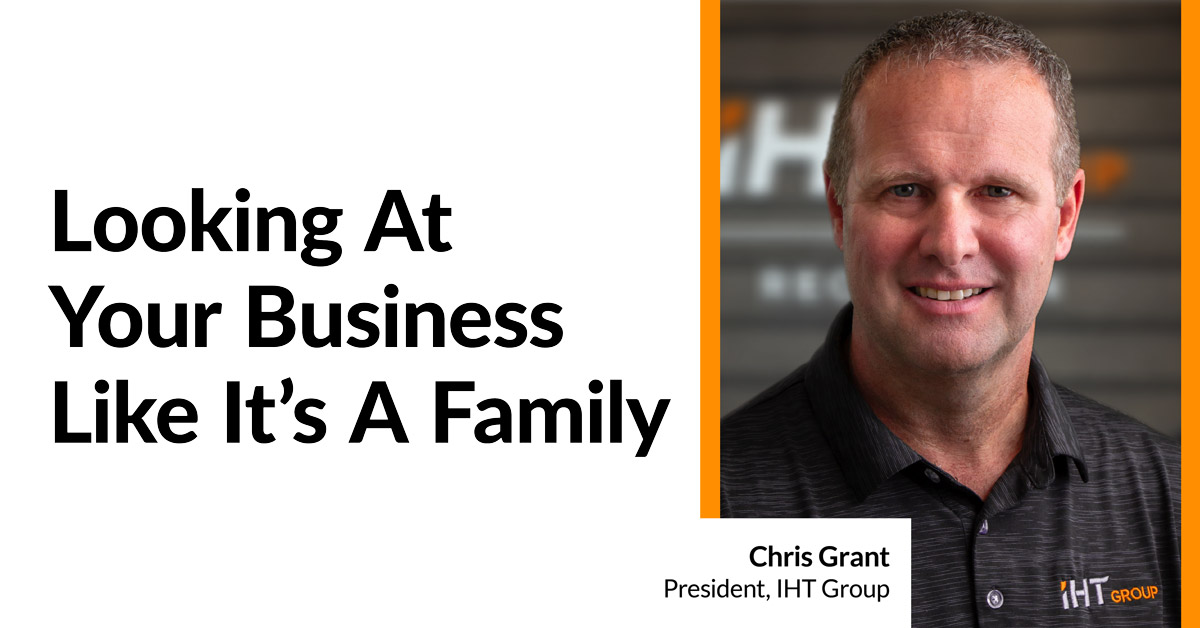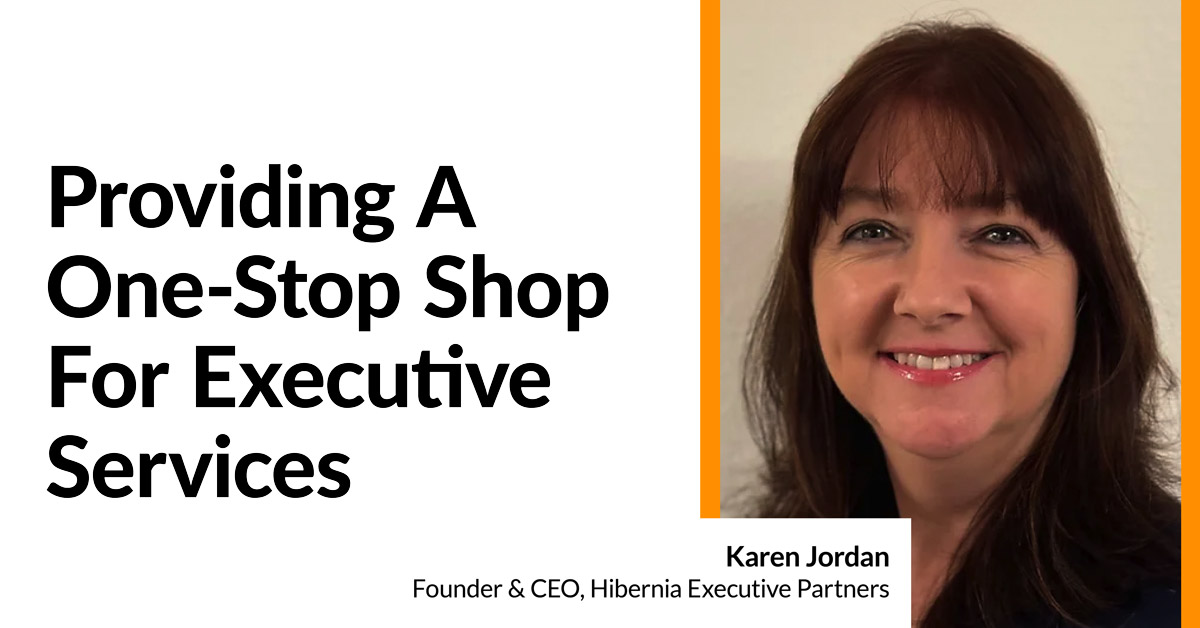Workforce Trends: The Good, The Bad and the Uncertain as We Look Ahead
Bonnie Elgie

Heading into the fall, the only thing that is certain is that there is a lot of uncertainty. This is particularly true when it comes to looking at workforce trends. Are companies hiring or laying off? Will employees be back in the office, continue to work from home or meet in the middle with a hybrid arrangement?
Debby Carreau, CEO and Founder of Inspired HR, shares her insights on what business owners can expect going forward, including:
- How layoffs in the tech sector can benefit other industries
- Why taking a near-term view is a smart business decision right now
- Why family businesses are in a unique position
- How these 5 tips can help businesses navigate through workforce uncertainty
Enjoy,
Mark
If there is one word to describe the current state of the the workforce in Canada, it’s “messy”. There was the work from home mandates during the pandemic, followed by the “great resignation”, the “great regret” and as employees look to find balance between home and work post-COVID, now we are seeing the “quiet quit”.
Debby Carreau, CEO and Founder of Inspired HR, one of Canada’s leading HR consultancy firms, has never seen anything like it.
“It’s a very difficult time for entrepreneurs and business owners because they are dealing with some many different challenges,” she says. “There is a lot of juggling right now in terms finding a balance between working remotely and in-office and figuring out what productivity looks like in a hybrid workplace.”
Layering in on top of these challenges is significant wage inflation and compression, layoffs, the threat of rising interest rates and the looming recession.
Debby adds that the recent significant layoffs in Canada’s tech sector may signal what is yet to come in other industries. She adds, “Tech has always been a leading indicator for other businesses. And so even though people say, ‘Oh, don't worry, the layoffs are only coming in the tech sector’, the reality is every time we've seen this happen in the tech sector, other industries have followed suit, probably within six months.”
There is a bright side to the tech layoffs and that is those employees working in human resources, sales, marketing and finance can work cross-industry, resulting in some relief in a tight labour market.
Debby recommends that in terms of hiring decisions business owners should be much more nearsighted for the first time ever, because the market is changing so rapidly.
“If you need to hire someone and you don't need to hire them right now, we encourage businesses to maybe wait 30 or 60 days for the labor market to adjust a little bit more. You don’t want to panic and over-hire, and then get stuck in the cycle of layoffs,” she says.
While the future looks very uncertain, there is also comfort in knowing that the workforce and business challenges are being faced by small and medium-size businesses around the world and everyone is “off plan”.
"The biggest piece of advice I can give to business owners, is make your decisions as far in the future as you need to, but not more than that. Take your two- or five-year plan and break it into 90-day milestones or action items.”
Family businesses may be better positioned to weather the cycles because they typically don’t have the same attrition. Family members working in the business are usually loyal and have a vested interest in the business’ long- term success. Where the risk exists is with employees, who are not family members, and who may feel that they don’t have future opportunities or a career path of growth within the company.
With all this uncertainty, what can companies do to navigate the workforce uncertainty. Debby offers the following suggestions:
Stay calm and don’t react to the latest catchphrases or media coverage. Focus on the basics of taking care of your team by making sure that they are paid well, understand what their jobs are, and know they are valued.
Make sure you have mental health resources offered through your benefits. Employees burnout is real and at an all-time high. Ensure your employees have the support to put boundaries up around work and their personal lives.
Encourage accountability, which is different than micromanaging. Have deliverables in place where employees have to show their work. People like to be held accountable because they also want to know they are doing a good job, meeting goals and they appreciate positive reinforcement.
Start preparing now if you are planning a transition. Annual employee surveys are very valuable in terms of providing data about employee engagement scores, turnover and retention rates. Make sure you have an organizational structure in place and that there is a plan to fill vacant positions or add new roles as needed. Private equity, in particular, is looking closely at the people side of businesses as part of their due diligence.
Finally, remember that you need to make the right decision for your business. Every culture and office environment is unique. Create a framework around what will provide the most value for your business and then look to see where you can provide flexibility that your employees need.
BACK










